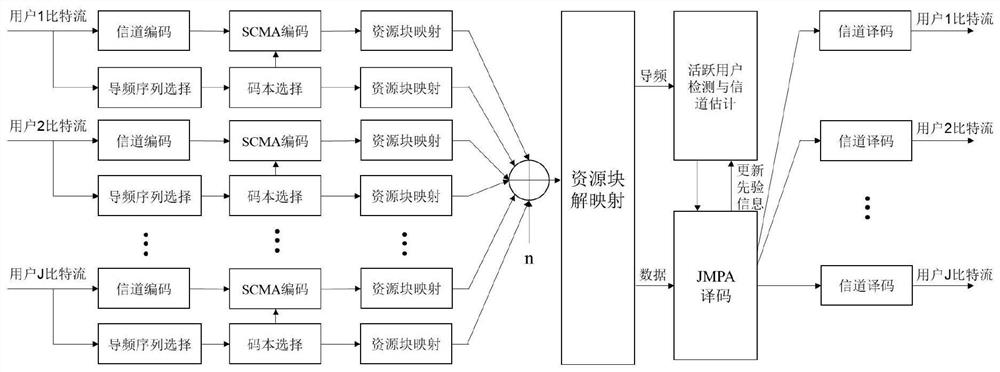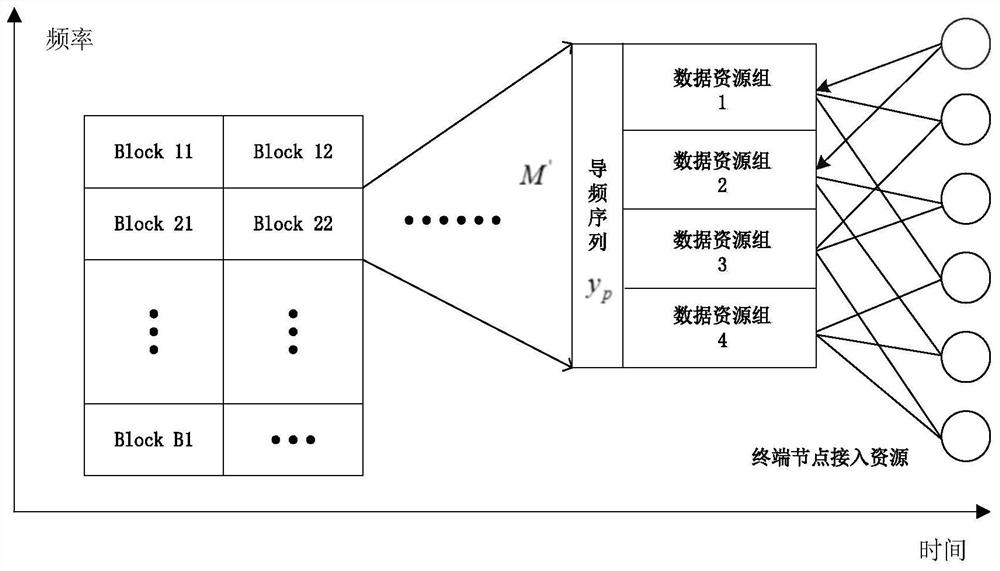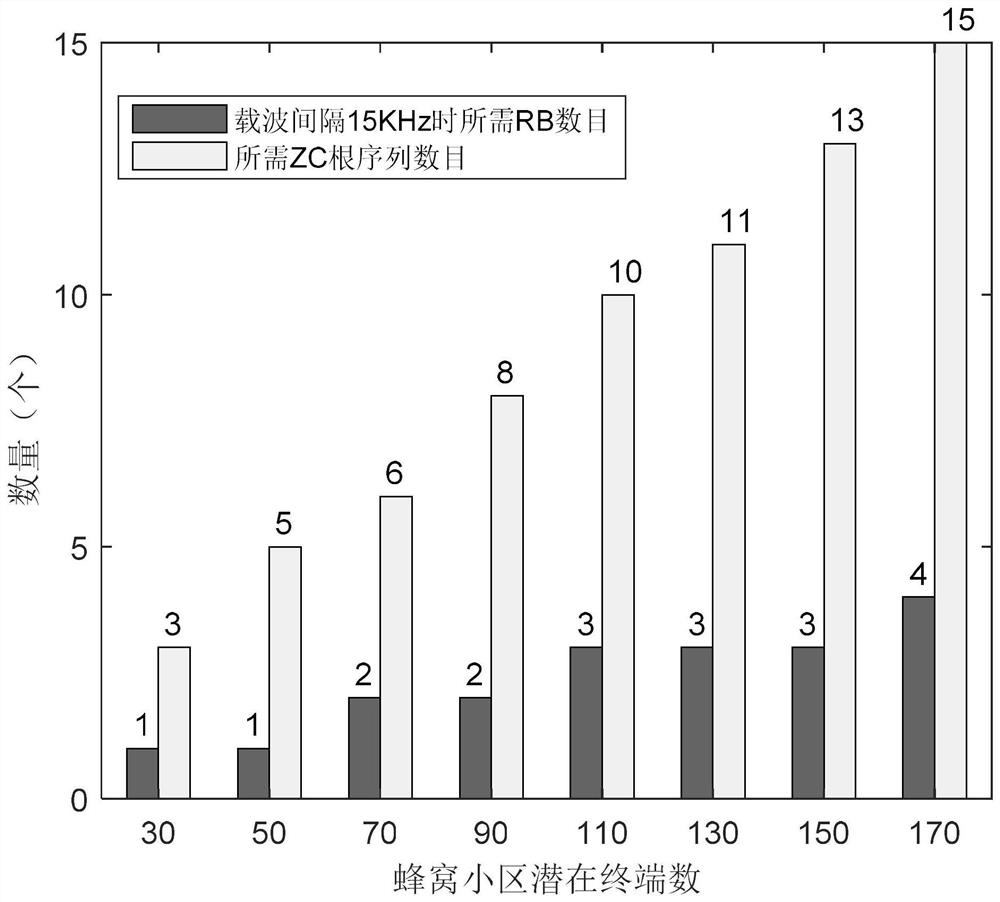Method of Optimizing Pilot Sequence Based on Observation Matrix in Uplink SCMA System
A technology of pilot sequence and observation matrix, which is applied in the field of optimizing pilot sequence based on observation matrix, can solve the problems of low detection accuracy, complex reconstruction, and high pilot overhead, and achieve improved detection accuracy, simple reconstruction, and The effect of low cost
- Summary
- Abstract
- Description
- Claims
- Application Information
AI Technical Summary
Problems solved by technology
Method used
Image
Examples
specific Embodiment approach 1
[0029] Specific implementation mode 1: The specific process of the method for optimizing the pilot sequence based on the observation matrix in the uplink SCMA system of this implementation mode is as follows:
[0030] Step 1. Establish an observation matrix model (formula 7) composed of pilot sequences;
[0031] Step 2, set the pilot set size of the registered user to be N, and the signal-to-noise ratio threshold to be γ;
[0032] If the receiving end SNR≤γ, perform step three; if the receiving end SNR>γ, perform step four;
[0033] Step 3: If the receiving end SNR≤γ, calculate the block sparse observation matrix Ψ composed of the pilot sequence set of BM′×BN size in the observation matrix model;
[0034] Among them, M' is the size of a fading block, N is the pilot set size of the registered user, and B is the number of fading blocks;
[0035] Step 4: If the receiving end SNR>γ, calculate the block sparse observation matrix Ψ composed of the pilot sequence set of size BM′×BN...
specific Embodiment approach 2
[0036] Specific embodiment two: the difference between this embodiment and specific embodiment one is that the observation matrix model (formula 7) composed of pilot sequences is established in the step one; the specific process is:
[0037] In an uplink SCMA system that lacks a request and scheduling process, the receiving end needs to obtain user activity information through blind detection. Most of the current research is based on the pilot sequence sent by the transmitting end to realize this process. The literature proposes the concept of contention transmission unit (Contention Transmission Unit, CTU), that is, the resource unit that users compete for access. It is also defined that a CTU includes its unique pilot sequence and some time-frequency resources. The pilot sequence corresponds to its unique pre-assigned codebook, and the sending end performs resource mapping on user data according to the codebook.
[0038] The receiver extracts the pilot signal from the receiv...
specific Embodiment approach 3
[0069] Specific embodiment 3: The difference between this embodiment and specific embodiment 1 or 2 is that in the step 3, if the receiving end SNR≤γ, the block composed of the pilot sequence set of BM′×BN size in the observation matrix model is calculated Sparse observation matrix Ψ; the specific process is:
[0070] Step 31: Set the FB estimated value of the fading block and the ZC sequence length N ZC ;
[0071] Step 32: According to the ZC sequence length N ZC Obtain the ZC root sequence, obtain the pilot sequence according to the ZC root sequence, and form the pilot sequence set according to the pilot sequence;
[0072] Step 33: Estimate the maximum pilot sequence set size according to the pilot sequence set:
[0073] Step 3 and 4: Screen the pilot sequence set, and calculate the block sparse observation matrix Ψ of BM′×BN in the observation matrix model from the filtered pilot sequence set ψ′.
[0074] Other steps and parameters are the same as those in Embodiment 1 ...
PUM
 Login to View More
Login to View More Abstract
Description
Claims
Application Information
 Login to View More
Login to View More - R&D Engineer
- R&D Manager
- IP Professional
- Industry Leading Data Capabilities
- Powerful AI technology
- Patent DNA Extraction
Browse by: Latest US Patents, China's latest patents, Technical Efficacy Thesaurus, Application Domain, Technology Topic, Popular Technical Reports.
© 2024 PatSnap. All rights reserved.Legal|Privacy policy|Modern Slavery Act Transparency Statement|Sitemap|About US| Contact US: help@patsnap.com










